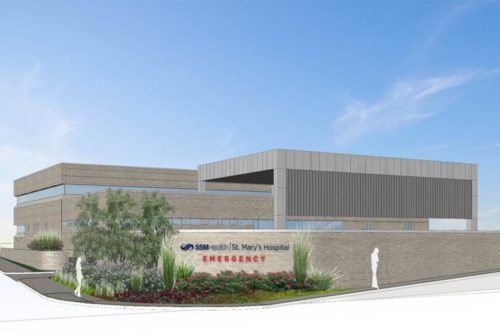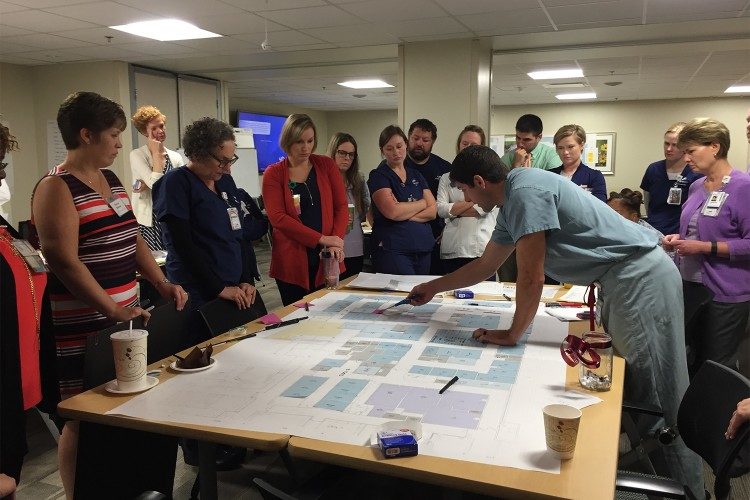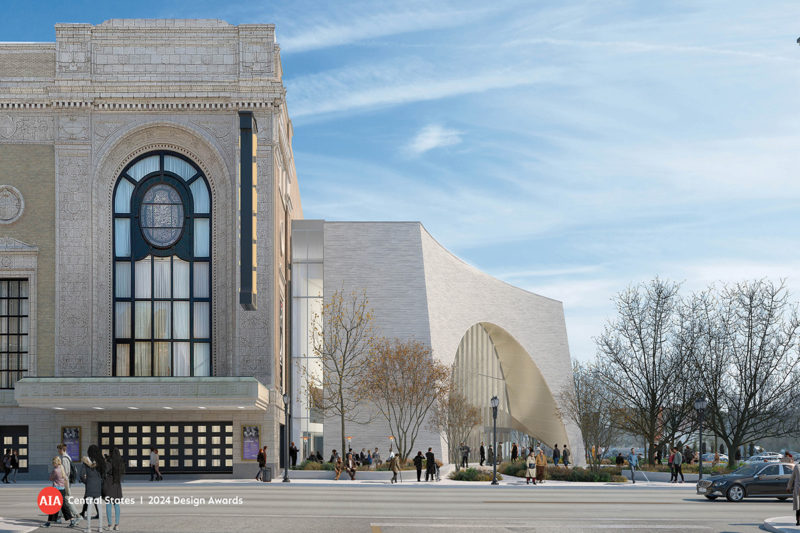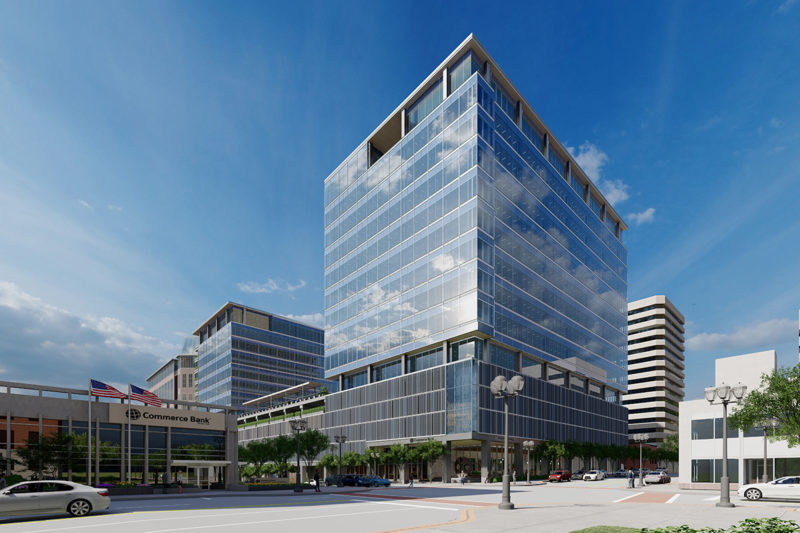As an architect or designer, it is always exciting to see a new project come to life. To see a client realize their vision through our teams’ efforts and creativity. New projects represent growth of organizations and their capacity to serve the community. They also represent opportunities for expression of brand- to craft an experience for patients, visitors and staff that reflects the culture and values of the organization.
The most exciting time for me is the very inception of a project when we are able to work closely with a client to understand their current challenges and future aspirations. Often the design process can feel like a series of presentations where designers’ ideas are unveiled, the client group responds, and then the design team takes the notes back to their office for the next iteration. There is a linear flow to this that makes logical sense.
In my opinion, the best projects are the ones where we get to kick-off the project with an interactive workshop that engages a large group of stakeholders. These workshops are fluid, dynamic, occasionally loud and always less predictable than a traditional design presentation. To lead this type of meeting, you have to be prepared for anything, be able think quickly on your feet, and be able to communicate in a way that brings the group to a mutual understanding of their shared priorities and vision for the future. It is exhilarating – and can be a lot of fun!
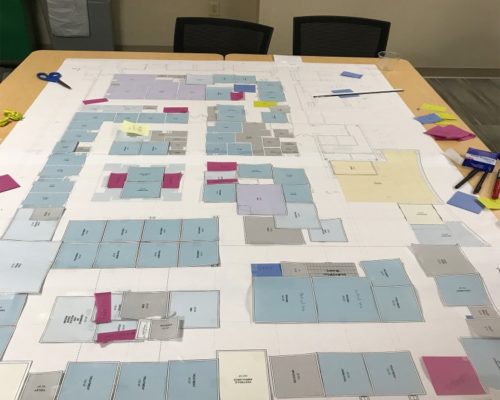 During these workshops we give stakeholders the tools to “become” the architect- paper dolls of the key spaces that are to scale so that their ideas can be tested in real time. In school, architects are taught to develop a parti (design concept) and present so that the client can understand our idea. In these workshops we flip the script, stakeholders are given the tools to explore and explain spatial relationships and architects listen to understand the ideas of our client. These stakeholders work in these spaces every day, and can provide insight that is invaluable to the success of a design.
During these workshops we give stakeholders the tools to “become” the architect- paper dolls of the key spaces that are to scale so that their ideas can be tested in real time. In school, architects are taught to develop a parti (design concept) and present so that the client can understand our idea. In these workshops we flip the script, stakeholders are given the tools to explore and explain spatial relationships and architects listen to understand the ideas of our client. These stakeholders work in these spaces every day, and can provide insight that is invaluable to the success of a design.
So, does that mean the client doesn’t really need an architect? Unfortunately, we have never left a workshop where the stakeholders had developed a complete, thoughtful, and code-compliant design for their project. We always leave with a much greater understanding of our client’s desires and priorities. Stakeholders leave not only feeling that they have been heard by the design team, but that they have been heard by their colleagues and the leadership of their organization. The group comes together in alignment that expedites the rest of the design process. When changes are needed due to an existing condition or new code requirement, the design team can quickly focus on solutions that are in alignment with stakeholder priorities.
One recent project that exemplifies this process is the Emergency Department Expansion at SSM Health St. Mary’s Hospital. For two days, our team of five designers facilitated and listened to about 20 stakeholders including representatives from administration, nursing, team leaders, physicians, EMS, infection prevention, security, environmental services, and plant operations. We broke the group into four interdisciplinary teams to develop and share conceptual layouts. Stakeholders voted on their favorites. They went home and slept on it and came back the next day to repeat the process.
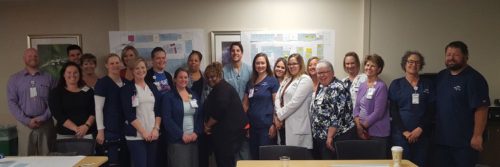
In the end, the group didn’t pick one of the eight layouts, they selected a concept from each of the four second-day layouts that they wanted to incorporate into the solution. Our design team was able to use this information, along with all that we had heard during the two days of the workshop, to develop a conceptual plan that incorporated these components. Two weeks later at the next design meeting, that plan was unanimously approved and is currently under construction.
